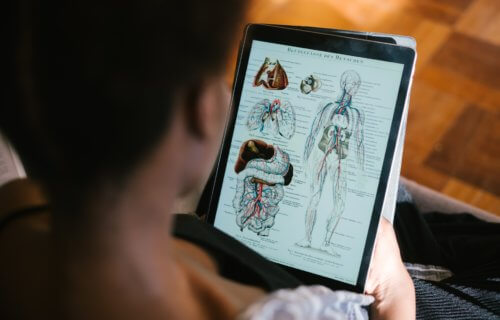SHENZHEN, China — Our heart, lungs, and other organs all age at varying speeds, a new study reveals. Identifying which are faring best and worst holds the key to extending life, according to an international team of researchers.
For instance, someone who’s 45 years-old could have the metabolism of a teenager, while another person may have type 2 diabetes and the immune system of a 20-year-old. Most molecular theories of aging don’t distinguish among physiological systems, viewing it as systemic.
Now, an analysis of more than 4,000 people has found combinations of molecular and other changes that are specific to each organ. The review found organs and systems were aging at different rates — a phenomenon that potentially predicts mortality.
“Our study used approaches that can help improve our understanding of aging and—more importantly—could be used some day in real healthcare practice,” says lead author Dr. Xun Xu from the Beijing Genomics Institute in a media release. “We used biomarkers that could be identified from blood and stool samples plus some measurements from a routine body checkup.”
Multiple ‘clocks’ in the human body
It is common to say someone looks either younger or older than their actual chronological age, but aging is more than skin deep. Our organs and systems may have different ages, at least from a biological perspective, Dr. Xu says.
The international team demonstrated that there are multiple “clocks” within the body that vary widely based on each person’s genetics and lifestyle. Biological aging is a concept that has been around since the 1970s, with previous studies focusing on the macro level.
“There has been a lack of practical applications in a population-based sample for precisely estimating the aging rates of live people’s organs and systems,” says co-lead author Dr. Xiuqing Zhang of BGI. “So we decided to design one.”
Chinese men and women between 20 and 45 years-old provided facial skin images and underwent physical fitness examinations during the study.
“Most human aging studies have been conducted on older populations and in cohorts with a high incidence of chronic diseases,” notes co-lead author Professor Brian Kennedy from the National University of Singapore. “Because the aging process in young healthy adults is largely unknown and some studies have suggested that age-related changes could be detected in people as young as their 20s, we decided to focus on this age range.”

Some factors are good for one organ and bad for another
In total, scientists considered 403 features involving metabolism, biochemistry, immunity, body composition, physical fitness, brainwaves, the face, and gut bacteria. They classified these features into nine categories related to various systems including cardiovascular, kidney, liver, sex hormone, skin, nutrition, immune, physical fitness, and the microbiome.
Researchers also divided the groups into male and female categories because of sex-specific differences. From there, the team developed an aging-rate index that could correlate different bodily systems with each other. Based on their findings, they classified the volunteers either as aging faster or slower than their chronological age.
Overall, the study finds that biological ages of different organs and systems have diverse links, including some unexpected ones. Scientists expected healthy weight and high physical fitness levels to have a positive impact. However, surprisingly, having a more diverse microbiome pointed to having a younger gut, while having a negative impact on the aging of the kidneys.
This is possibly because the variety of species causes them to do more work. The researchers compared the results with the National Health and Nutrition Examination Survey in the United States and the Chinese Longitudinal Healthy Longevity Survey which includes data on more than 2,000 centenarians and matched middle-aged controls.
In addition, they looked at mutations to determine whether differences could be explained by genetic factors. There, researchers did find certain pathways that could have a link to aging rates.
The researchers will track the volunteers to validate their findings. Future studies will use additional approaches for classifying features of aging and studying the interactions between organ systems. The team also plans to use single-cell technology to look at programmed aging in more detail.
The findings appear in the journal Cell Reports.
South West News Service writer Mark Waghorn contributed to this report.
